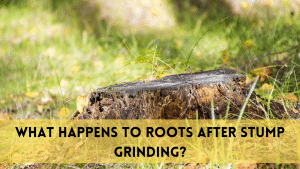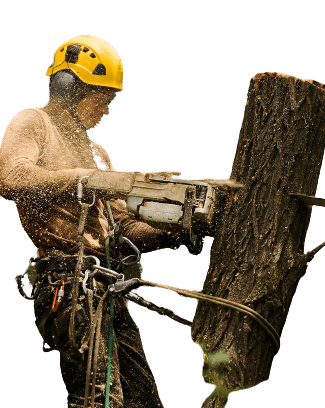How long does a cottonwood tree shed?
Cottonwood trees, with their towering stature and beautiful foliage, have for a very long time captured the imagination of those who are interested in nature. On the other hand, if you are a land steward or a homeowner who has cottonwood trees on your property, you may be curious about how long it takes for these trees to shed their cottony seeds. In this in-depth piece, we will delve into the fascinating world of cottonwood tree shed and throw some light on their life cycles, shedding patterns, and the many ways in which you may control their shedding.
The Different Stages of Cottonwood’s Tree Shedding
Before you can comprehend how long cottonwood trees lose their needles, you need to get familiar with their life cycle. Cottonwood trees, which belong to the genus Populus and shed their leaves in the fall, may be found growing throughout North America, Europe, and Asia. Both the leaves, which are shaped like hearts, and the cotton-like substance that the plants produce are distinctive characteristics of these plants.
Catkins, the reproductive components of cottonwood trees, may be either male or female. Cottonwood trees contain both male and female catkins. Early in the spring, the male catkins will release pollen, which will then be carried by the wind to the female catkins, where it will fertilize them. The process of fertilization ultimately results in the development of seeds in the plant.
Because the seeds of cottonwood trees are wrapped in a substance that resembles cotton, the wind may easily carry them to other locations. Because the seeds are necessary for the tree’s reproduction, the tree will drop its fruit in order to collect them.
When does the Cottonwood Tree shedding process begin?
Cottonwood trees typically release their seeds somewhere between the end of spring and the beginning of summer, just after the female catkins have been pollinated. When this occurs, the cottony seeds that have been blown through the air by the wind begin to fill the atmosphere, creating a mesmerizing scene as they float and whirl in the breeze.
The seeds have a feathery structure, which helps in their spread across the environment. As a result of the vast amount of seeds that the cottonwood trees produce at this time of year, it is not uncommon to see whole landscapes covered with cottonwood seeds.
When will the shedding end and for how long will it last?
The dropping of cottonwood needles is a seasonal occurrence that does not last for very long. The shedding of cottonwood seeds typically lasts for a few weeks and seldom goes on for more than a month in most locations. This period varies depending on the kind of cottonwood and the climate in the area.
The shedding process could be more drawn out in more frigid regions, where the growth and reproductive cycles of the trees move at a more leisurely pace. On the other hand, in warmer regions, the shedding process often takes a shorter amount of time.
Factors That Can Affect How Long Shedding Lasts
The amount of time it takes cottonwood trees to shed their seeds might be affected by a number of factors, including the following:
- Cottonwood trees, depending on their species, shed their seeds at times that are relatively variable from one another. Some people could start the season earlier than others.
- The environment of the area has a role in both the timing and the duration of the shedding process. environment factors include both temperature and humidity.
- The duration of the shedding season may also be affected by the overall health of the cottonwood tree. Trees that are healthy have a greater chance of having a consistent and regular cycle of shedding.
- There is a possibility that the cottonwood seed dispersal process is influenced by climatic factors like wind patterns. It’s possible that strong gusts may carry the seeds farther, which might potentially lengthen the shedding time.
- Cottonwoods that are older and more established are likely to lose their leaves later in the season than their younger counterparts.
The Captivating Appeal of Cottonwood Tree Shedding
Although it might be a nuisance at times, the cottonwood tree’s habit of dropping its seeds also lends an air of natural elegance to the surrounding area. Cottonwood seeds floating in the air are enticing to many people because they are similar to confetti that nature has created and they signal the arrival of summer.
It acts as a reminder of the exquisite beauty and intricate workings that exist in the natural world. Not only do cottony seeds aid in the reproduction of the cottonwood tree, but when they finally settle down and take root, they also contribute to the overall biodiversity and richness of the environment.
Cottonwood Management of the Shedding Process
Cottonwood tree owners and land stewards may have difficulties during the shedding season if they have cottonwood trees on their property. Because cottony seeds have the potential to accumulate on lawns, sidewalks, and gutters, these areas may need routine cleaning.
The following are some recommendations for coping with the shedding of cottonwoods:
- In order to maintain your outdoor spaces free of cottonwood seeds during the shedding season, it is a good idea to set a periodic cleaning schedule and to clean on a regular basis.
- If you prune your cottonwood tree, you may be able to encourage it to produce fewer seeds. For advice on the most effective methods of pruning, consult an arborist.
- If you want to increase the amount of biodiversity in your surroundings, you should think about planting alternative tree species that shed less or a mix of different kinds of trees.
- Consult an Arborist It is highly recommended that you seek the guidance of an experienced arborist in the event that cottonwood shedding is a significant issue. They may be able to provide guidance on the care and upkeep of trees.
Related Posts:
FAQs
When do cottonwood trees first start to let their seeds fall to the ground?
In a typical year, cottonwood trees will drop their seeds somewhere between the end of spring and the beginning of summer, just after the female catkins have been pollinated.
For how long does the shedding phase of the cottonwood tree occur?
The process of cottonwood seeds falling from the trees often takes a few weeks but seldom more than a month. The time span might be shorter or longer depending on factors such as the kind of tree and the average temperature in the area.
Can the shedding of cottonwood seeds be delayed by particular environmental factors?
Yes, the duration of shedding may be affected by a number of factors, such as the species of cottonwood, the temperature in the area, the tree’s health, the effects of the environment, and the age of the tree.
What can I do about the cottonwood on my property that keeps dropping its needles?
Develop a regular cleaning routine, study other tree species, consider tree cutting, and obtain expert guidance on tree care and management from a certified arborist to cut down on the amount of cottonwood that sheds.
Can cottonwood seeds be harmful to the surrounding ecosystem?
That’s the fifth question. Cottonwood seeds do not pose any risks to the surrounding ecosystem. In point of fact, not only do they contribute to the preservation of biodiversity, but they are also an essential part of the reproductive process of trees. They serve an essential purpose in the natural world, despite the fact that in certain instances they may need to be cleaned up.
Conclusion
In conclusion, cottonwood trees will drop their fluffy seeds for a short period of time, often lasting anywhere from a few weeks to a month between the end of spring and the beginning of summer. The amount of time that passes between sheddings might be different depending on factors such as the type of cottonwood, the temperature of the area, and the overall health of the tree. It is essential to acknowledge the natural beauty and ecological significance of the cottonwood shedding process, despite the fact that this phenomenon might be bothersome for property owners. Cottonwood seeds not only ensure the continued existence of these stunning trees, but they also make a significant contribution to the natural beauties and variety of the world.




